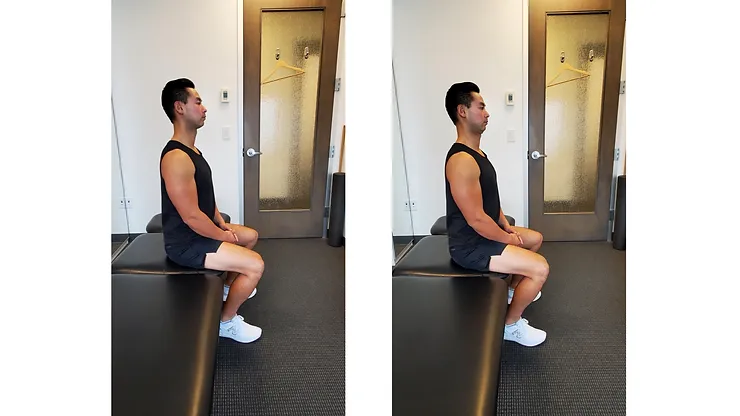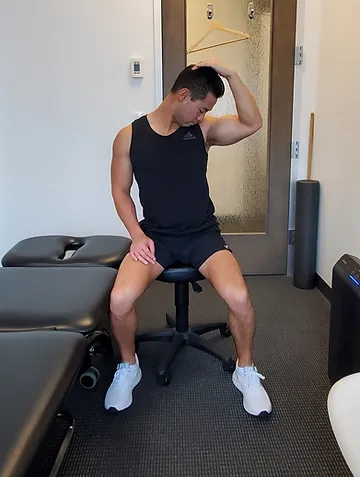You have had a busy week at work. Sitting all week in front of your computer. Your neck is stiff in the morning and gets even more sore at the end of the day. As the week continues that pain gets worse and now you begin to struggle to fall asleep at night because of the stiffness. This issue can be due to a condition called postural related neck pain. Let’s explore how long hours of work at your desk can lead to postural related neck pain.

What is it?
Postural related neck pain is a type of neck pain caused by poor posture, such as sitting for long periods of time with your head bent forward or sitting with your head tilted to one side. To better illustrate this let’s use an example. Let’s say I ask you to hold a watermelon in front of you with your arms stretched out. Very quickly your arms will get tired of holding such a heavy weight in front of you. Let’s translate this example over to you head position when you are sitting. Compare your head to the watermelon and your arms like your neck. If you are seated hunched forward your neck (like your arms) will get tired of holding your head (like the watermelon) and over time this causes pain and stiffness in your neck.
What are the signs and symptoms?
The most common symptoms of neck pain include pain, stiffness around the neck, shoulders, and upper back. You will experience difficulty moving your neck normally. Other symptoms may include tenderness to the touch, headaches, dizziness, and fatigue. In some cases, tingling or numbness may be present in the arm and hand. These symptoms may worsen as you sit for longer throughout the day. The pain often is the worse at the end of the work day and in the evenings before bed.
How is it treated?
Physiotherapy treatment will include massaging the muscles around the neck, shoulders, and upper back. Acupuncture and dry needling would also be very effective at relieving the tension in this area. Joint mobilization and manipulations will also be very beneficial at resolving the stiffness in the neck and upper back allowing you to move your head freely without pain.
Since the main cause is posture it’s important to address your ergonomics when you are working. Like the watermelon example used above, it’s important to avoid sitting slouched forward since this causes your neck to become fatigued. Sit up straight. By doing so your neck will not have to work as hard to hold up the weight of your head which will mean it will not become fatigued and sore at day’s end. Sitting in the back of your office chair with your back against the back rest will also help you sit up straight. Raise the height of your computer monitor so it is eye level. Try your best to avoid using your laptop for prolong periods of time since the screen is low. If you have to use a laptop consider placing the laptop on a laptop stand or books so it is higher and connect it to an external keyboard and mouse.
Common Home Exercises
Chin tucks
Start in a seated position. Put your chin into a neutral position, and keep your eyes looking straight ahead. Gently tuck your chin towards your chest, so that your chin is parallel to the ground. Hold this position for 5 seconds, then release. Repeat this exercise 10 times for 3 sets.

Upper trapezius stretch
Start in a seated position. Gently tilt your head to one side, so that your ear is close to your shoulder. Using your hand, apply pressure to the side of your head and hold the stretch for 20-30 seconds. Release the stretch and switch sides. Repeat this exercise for 3 sets on both sides of your neck.
Levator scapulae stretch
Start in a seated position. Gently bend your neck down to look down at your armpit. Using your hand, apply pressure to the top of your head and stretch for 20-30 seconds. Release the stretch and switch sides. Repeat this exercise for 3 sets on both sides of your neck.


